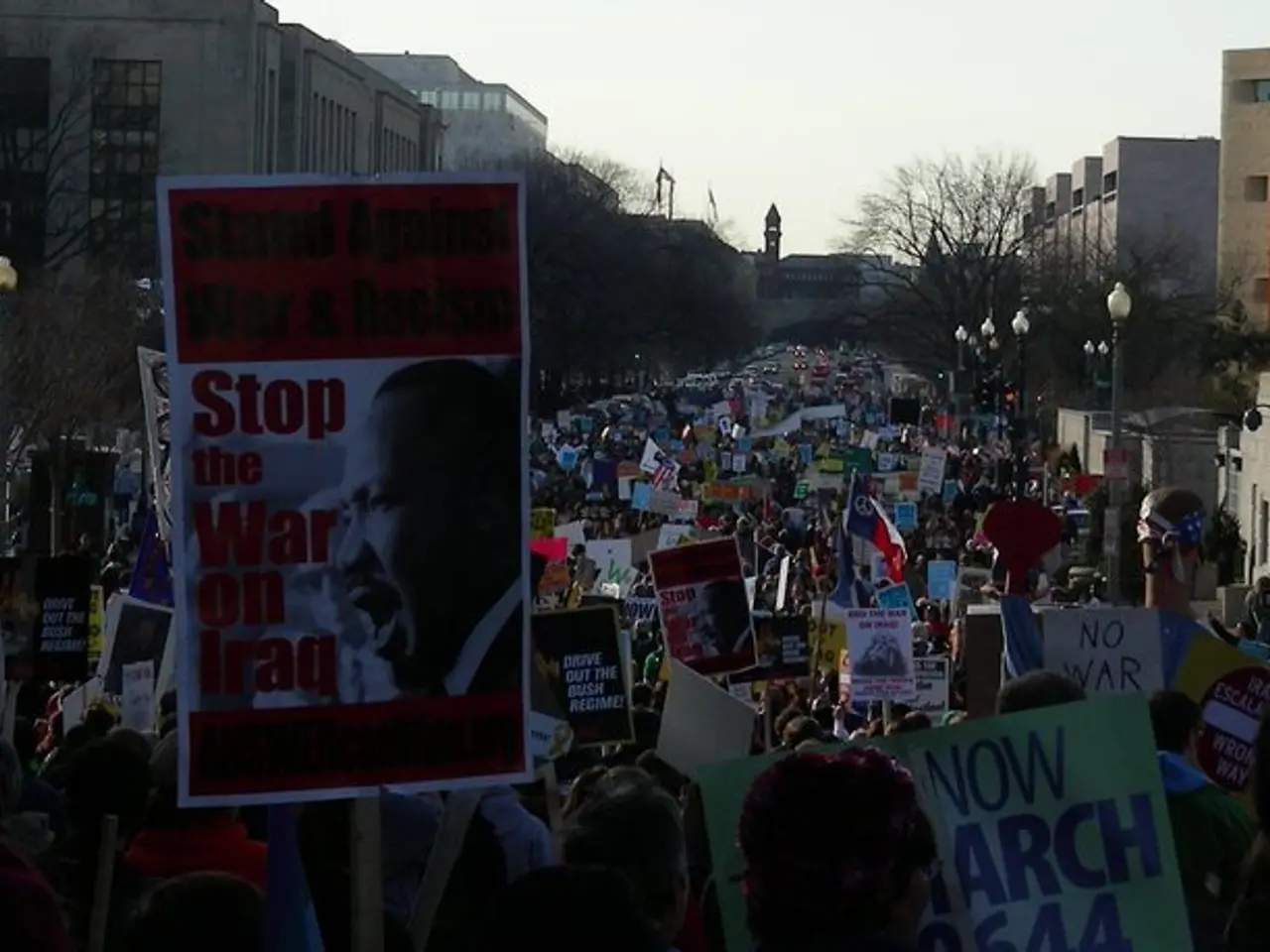Tensions escalate on the streets of Serbia as demonstrators and the president raise the specter of civil war following confrontations between them
In the heart of the Balkans, Serbia is currently grappling with a deep political crisis, marked by intense clashes between pro-government supporters and anti-government demonstrators. The unrest has been simmering for over nine months, primarily against government corruption and negligence, with the spark ignited by a tragic railway station canopy collapse in Novi Sad last November that claimed 16 lives[1][2].
The recent escalation began on August 12, with violent confrontations in cities such as Vrbas and Bačka Palanka. Pro-government groups attacked peaceful demonstrators, while the police, in many instances, did not intervene or were passive, further fueling public outrage and nationwide protests[1]. Since then, nightly clashes have continued across the country, with police and riot forces using tear gas and armored vehicles against demonstrators, leading to dozens of injuries and arrests[2][3].
President Aleksandar Vučić has defended the police and security forces, praising their conduct, promising bonuses, and accusing the protests of being orchestrated by Western actors to destabilize his government[2][4]. On the other hand, Interior Minister Ivica Dačić has denied excessive use of police force, instead blaming protestors for attacking officers and portraying the unrest as a threat to the state[2][4].
However, accusations of repression and corruption continue to dog the Vučić administration. Critics claim that the regime has been exposed by the incident and its aftermath, with allegations of corruption and cronyism[1]. Some have even accused the government of using masked enforcers to instigate violence, loot businesses owned by regime opponents, and provoke more aggressive clashes[3][4].
The opposition's demands include early elections and resignations of local police chiefs, with protests spreading beyond major cities to smaller towns like Valjevo[3]. The Blockade group of student protesters, who have led many of the rallies, have accused the authorities of trying to provoke a civil war and have announced another protest for Thursday evening[5]. They allege that the authorities brought thugs and provocateurs onto the street to spark violence and discredit the demonstrators, while accusing the police of protecting the regime's loyalists who were throwing stones and launching fireworks at demonstrators[5].
As the situation remains volatile, President Vučić portrays himself as a guarantor of stability in Serbia and the Balkans, promising no mercy for bandits and hooligans, and stating that he would stop any attempts to lead the country into civil conflict[6]. The current political landscape in Serbia is a complex tapestry of accusations, counter-accusations, and ongoing street violence, with no clear resolution in sight.
References: 1. BBC News 2. The Guardian 3. Al Jazeera 4. Reuters 5. B92 6. Deutsche Welle
- The ongoing political crisis in Serbia, characterized by intense clashes and violence, has transformed into a significant point of general news and discussion about war-and-conflicts, as well as politics, given its escalation and the possibility of a civil war.
- debates and analyses about the crisis in Serbia, featuring intense political clashes and violence, have gained traction not only in local politics but also in international spheres such as general news and diplomatic discussions, due to the country's strategic position in the Balkans and potential implications for stability in the region.






